Purple is a royal color and could sometimes symbolize richness and elegance. Suppose you want to give your home an attractive look and grace; there are several green-leaved perennials out there with purple-colored flowers that are available in different shades ranging from lavender to dark and rich violet.
You can also mix these shades of purple flowers with pink, blue, and even white-colored plants to give your home a more classic and befitting appearance.
However, plants with green leaves and purple flowers have various benefits to them, as they are not only grown for their beauty but also their versatility and allure, and they attract pollinators.
Most of these perennials like allium, vervain, lavender, hardy geranium, Lamium, and daylily have spring bulbs wildflowers that bloom in the fall and can be used as ground covers, climbing plants, and so on.
Here, we’ve highlighted about 20 most common green-leafed plants with purple flowers.
Table of Contents
Common Plants with Green Leaves and Purple Flowers
Plants with purple flowers bring a unique difference and attractive feel whenever it is used in the landscape.
As earlier mentioned, you can grow purple-flowered plants with different shades of purple color to give your garden extra elegance and looks. It will also give it extra texture.
Below is a list of the 20 most common and popular plants with green leaves and purple flowers.
1. Allium
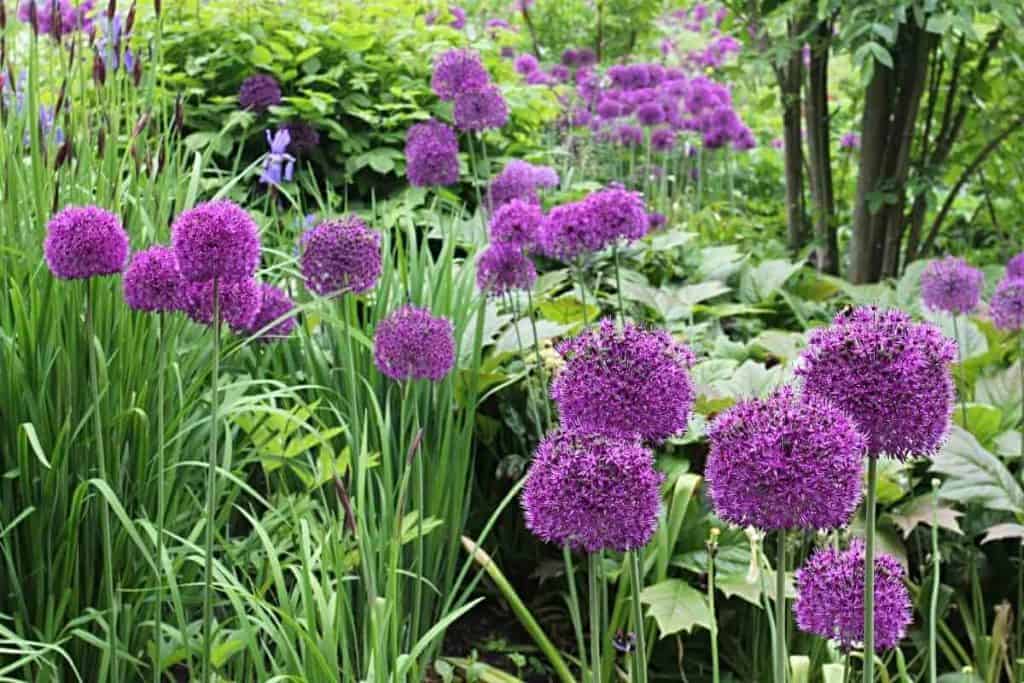
The allium species is one of the most popular green-leafed plants that produces purple flowers. It is a very exciting addition to any landscape, not just for its lovely feel but for its circular shape. The bloom head is formed from clusters of single florets that produce a complete and lush circular shape.
The allium is a spring-flowering bulb that needs to be grown during the fall. It can grow up to 3 to 5ft depending on the type.
It mostly produces blooms during the late spring to early summer. Its hardiness zone is in the USDA zones 4 to 10 and requires full sun, slightly acidic, and well-drained soil.
2. Vervain
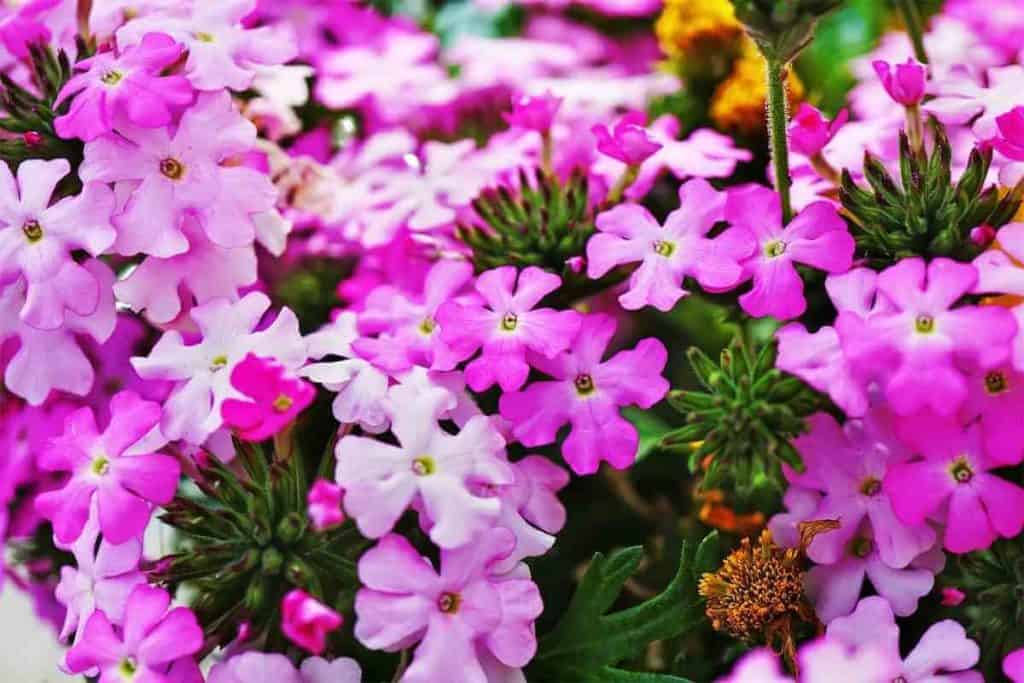
Another popular green-colored leaf plant with purple flowers is the vervain. It is a native perennial that grows flowers that tend to beat the other plants in your garden in terms of attractive feel. These plants can grow as high as 4ft.
The vervain variety prefers to be exposed to the sun sometimes, but not for long periods, and requires little watering. They are very scarce and can’t be easily seen in local nurseries, but they are easy to grow, especially from seed.
3. Lavender
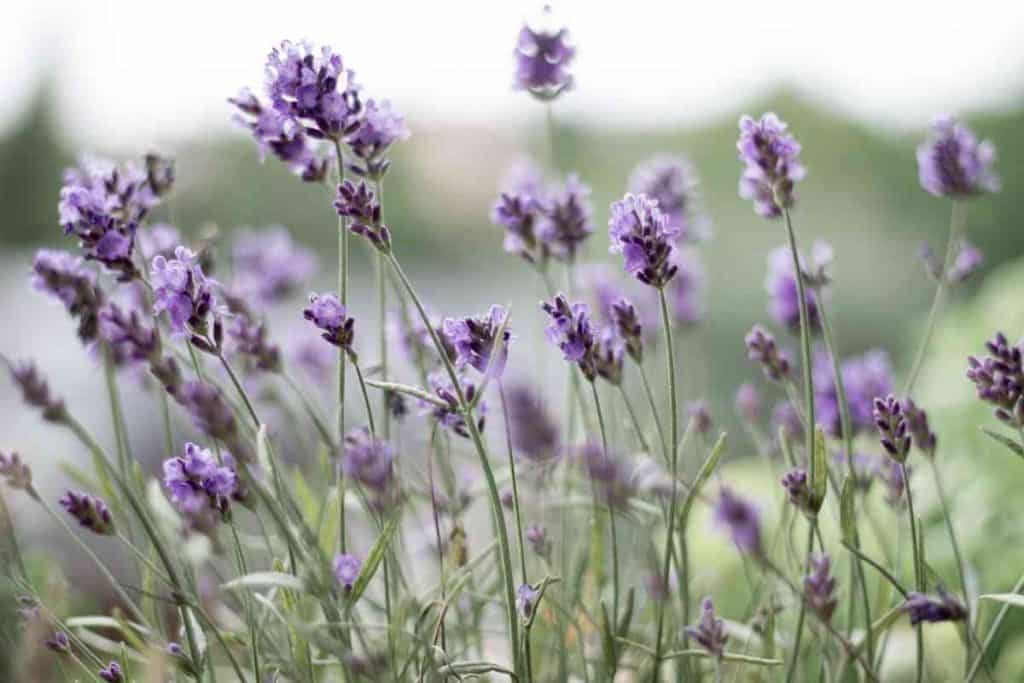
The lavender is not only beautiful but also possesses a unique fragrance that will give your home a special feel.
It produces purple flowers that form clusters and shows up during late summer on upright spikes. It features gray-green foliage that produces these clusters of fragrance-filled purple flowers.
The lavender thrives under full sun conditions, doesn’t need excess water, and prefers a well-drained soil system.
If you are growing them in an optimal growing area like zones 5 to 9, you shouldn’t stress much with maintaining or caring for them, as they can survive independently.
4. Hardy Geranium
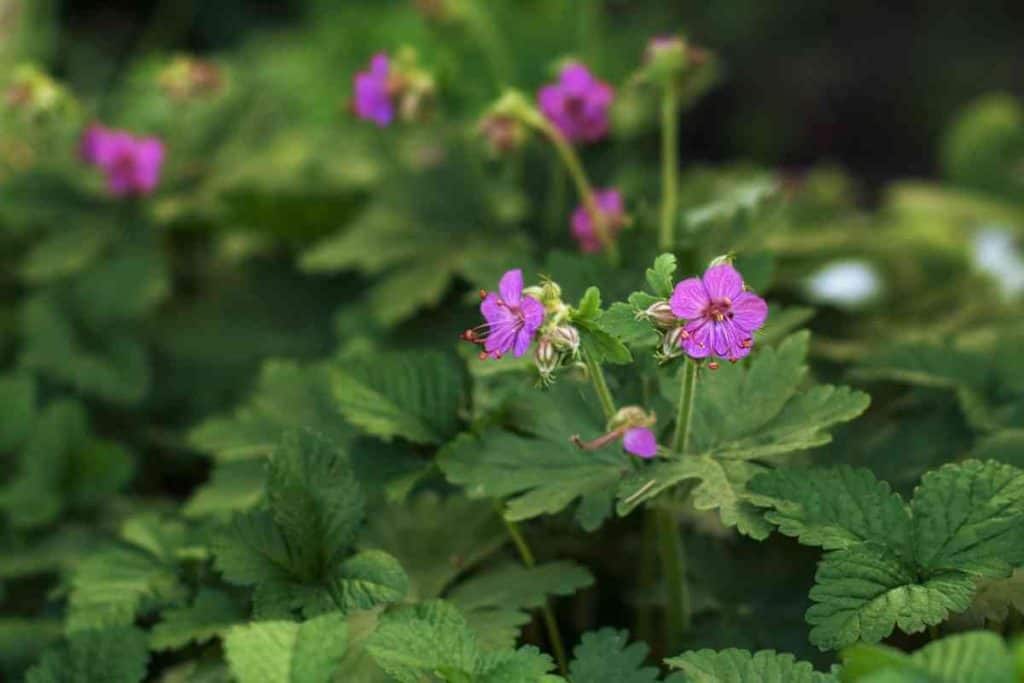
The hardy geranium is a perennial hybrid that produces saucer-shaped blooms that range from pink, purple, and blue shades and grow uprightly. It is a vigorous growing plant that is easy to grow and maintain.
Hardy geraniums prefer shady areas, which is why they are common among cottage garden schemes. They also provide a long period of pollen and nectar to several pollinators, especially bees. The plant can grow as tall as 85cm tall and wide.
5. Lamium
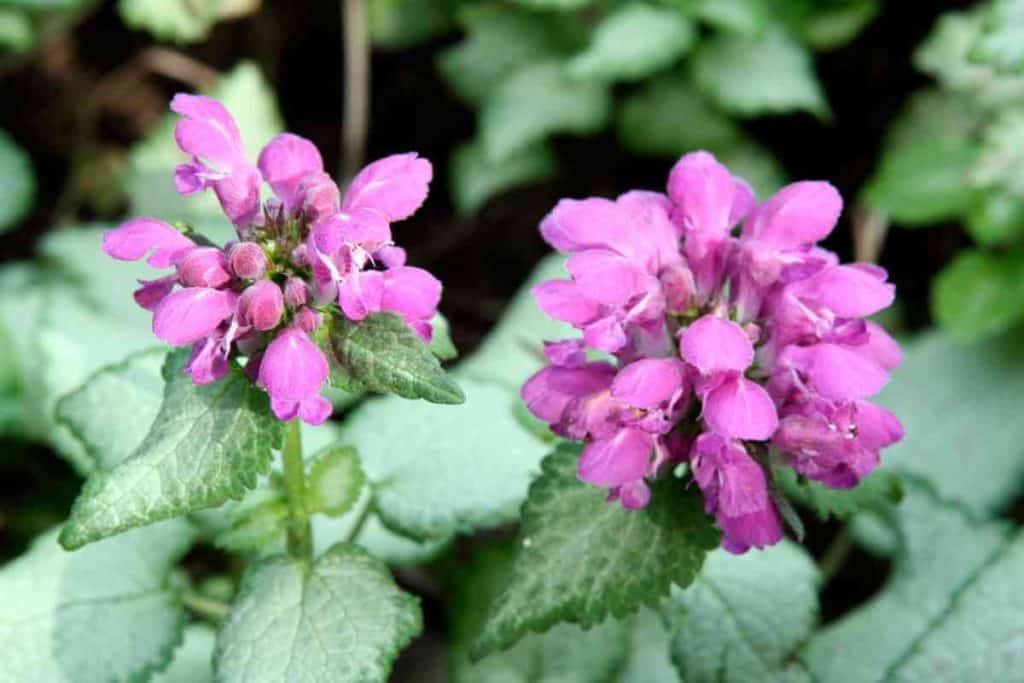
Popularly known as ‘Purple Dragon,’ the Lamium is widely considered a ground cover plant that features silvery foliage and pale purple blooms. It can also produce blooms of different colors ranging from pink, mauve, red, and white, according to its varieties.
The purple dragon can grow up to 9 inches tall and, at its adult stage, produces purple-colored foliage and red-purple blooms. It doesn’t like footpath areas and prefers bright, indirect sun. Watering should be moderate, and its soil should be well-drained and free from excessive moisture.
6. Daylily

This particular perennial can come with different bloom colors. Still, the most popular daylily variety produces purple color flowers, most notably the Rainbow Rhythm ‘Storm Shelter’, as it is widely called.
This variety forms attractive eggplant-colored flowers and circular, elegant petals. It prefers to produce flowers during mid to early summer in zones 3 to 9.
7. Teasel
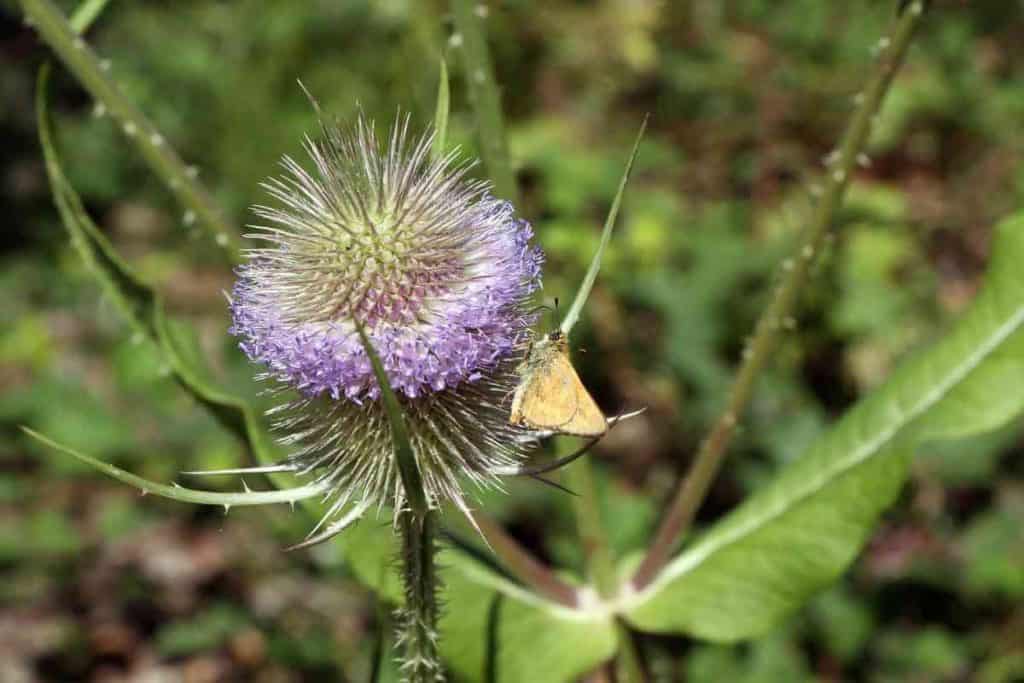
Another popular purple flowering plant is known as Teasel. Botanically called Dipsacus fullonum, the teasel is a biennial plant that is native to the UK. It features long spikes of brush-like flowerheads or bulbs and features purple flowers that attract bees and butterflies.
During the winter seasons, the plant is also attractive to Goldfinches, which consume their seed. The plant is best grown behind a border or in the bushy area of your garden. Teasels can grow up to 1.8m tall and 80cm wide.
8. Catmint

There are several catmint varieties, but one of its popular varieties is gorgeous perennials that feature scent-filled foliage and forms clusters of nectar-rich flowers during the summer season.
The little bushy catmint varieties are ideal for pot planting, while its bigger varieties are suitable for planting at the center of the border.
The catmint prefers to be positioned under full sun and thrives when grown with light, well-drained soil. It also requires moderate watering and can grow up to 90 cm tall and wide.
9. Clematis
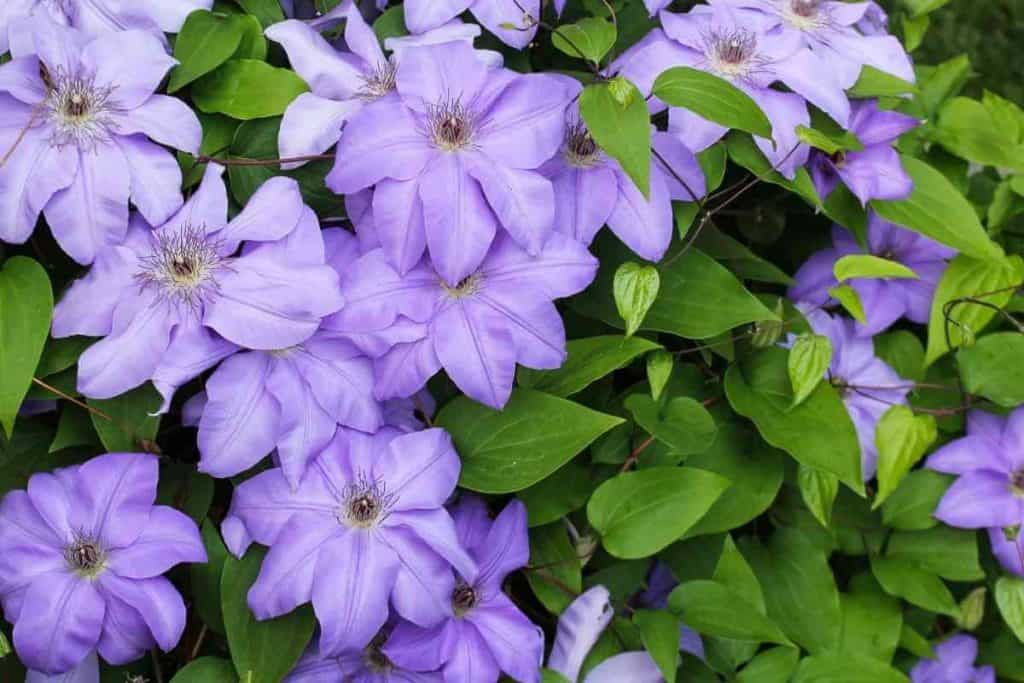
Clematis is a vining plant that grows attractive flowers of different shades. These shades range from pale mauves to deep, royal purples.
But the most popular of the clematis varieties grow bold purple flowers. If you’re going for spring blooms, think Clematis Alpina variety, but for summer, you can try Clematis Viticella.
Clematis is simply grown by wrapping it around a mailbox base, light post, or arbor. Many clematis types prefer full sun and moderate watering and can grow as high as 2.5m and 1.5m across.
10. Perennial Wallflowers
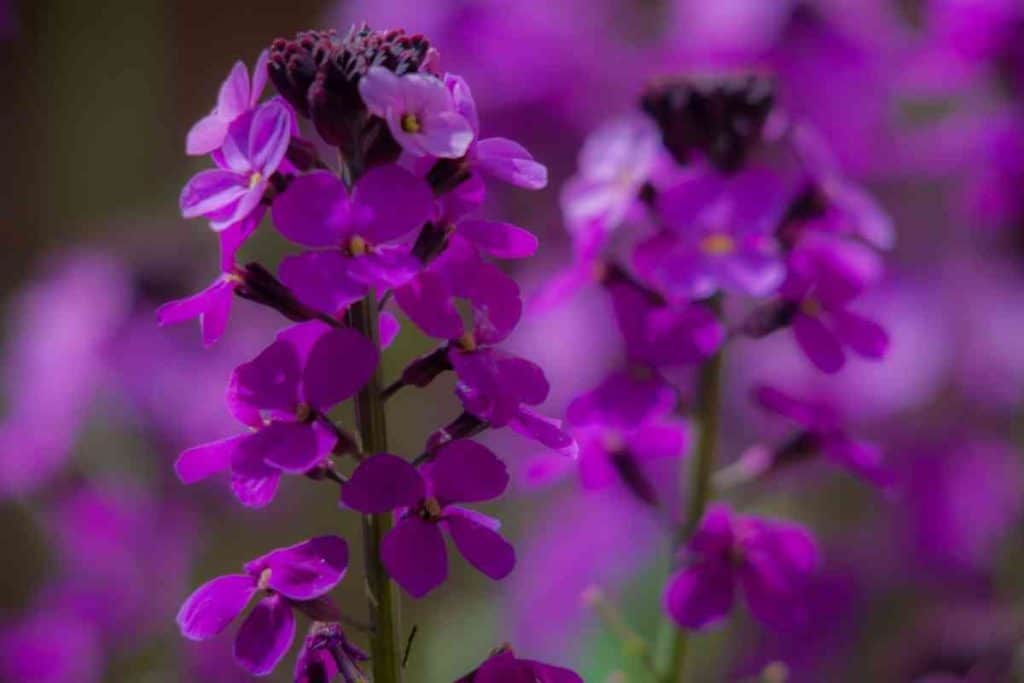
This variety of purple-producing blooms is an attractive and floriferous woody-stemmed perennial plant. It can also produce a variety of colored flowers, including clusters of mauve blooms on long spires for several months.
Around the southern zones, it can flower all through the year. It can also grow up to 45cm tall and 50cm across.
11. May Night Sage (Salvia)
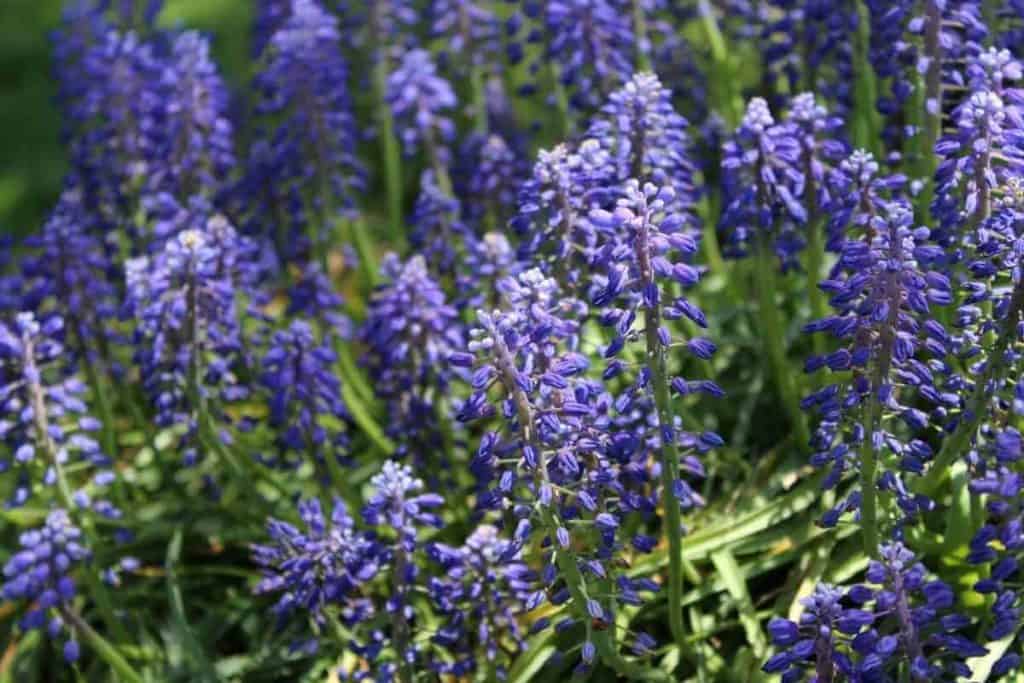
This variety is perennial salvia that features deep bluish-purple flowers that grow on spikes of almost 2 feet tall. The May night salvia is popular for its extended period of flowering starting from May to June, thereby making it an ideal prospect for landscape planting.
Similar to other salvia varieties, the May night is also perfect for perennial borders, cottage gardens, wildflower gardens, and/or butterfly gardens.
Pruning of this plant is best done during the early spring to enhance fresh new growth. It thrives under full sun and well-drained soil conditions.
12. Hydrangea

Hydrangea is one of the most common and well-known plants that produces purple blooms. It is also notable for producing large leaves or mopheads of different attractive colors. It forms clusters of large, beautiful round-shaped flowers on a moderate to large shrub.
Hydrangea varieties thrive under partially sheltered areas and require moderate watering. As earlier mentioned, its flowers can come in varieties of color, most notably white and purple.
13. Crocus
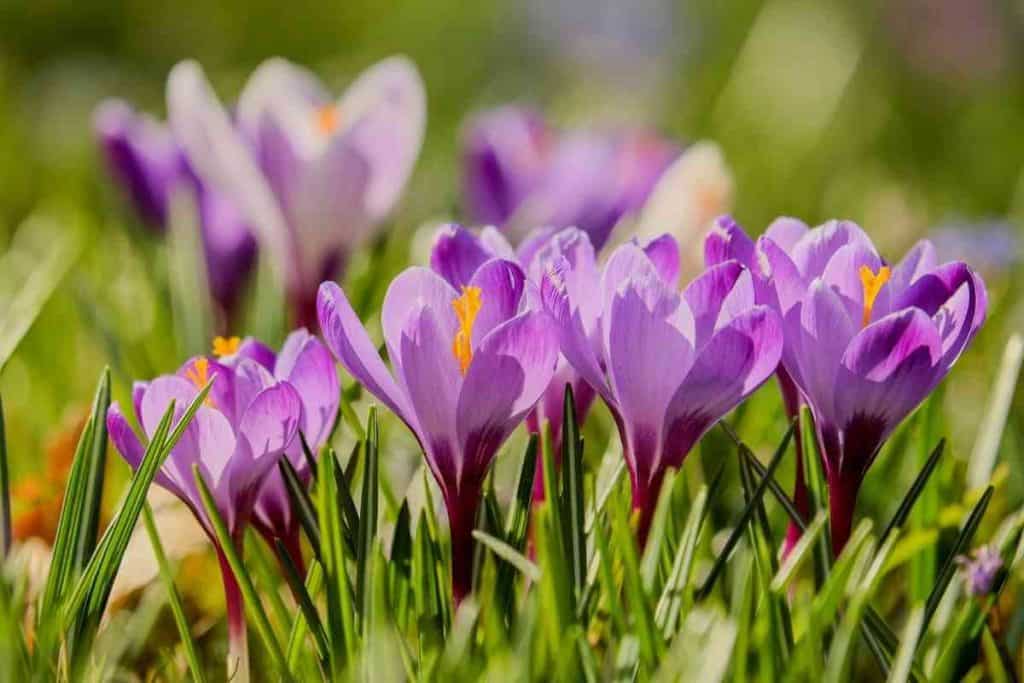
Crocus is one of the spring harbingers that produces flowers between March and April. It is a little plant that features flowers that has star-like shape and are very short with a maximum height of 3 to inches depending on the variety.
The foliage resembles blades of grass and has a light stripe that comes across its middle. Crocus thrives under well-drained soil and prefers full sun to partial shade conditions. If the soil is too wet, it can cause its root to rot.
14. Verbena
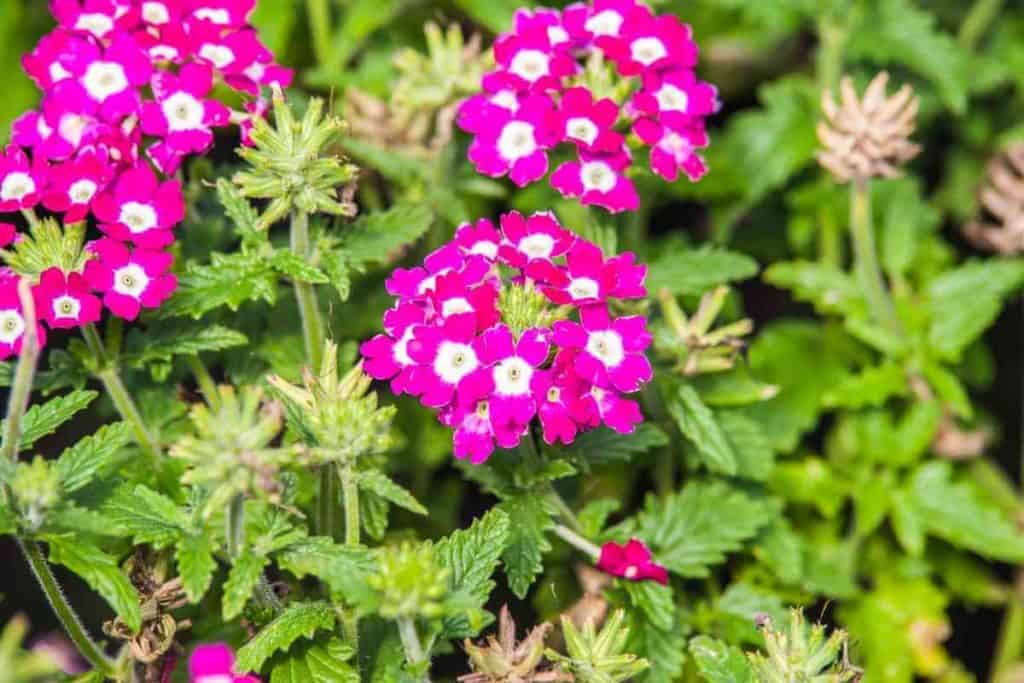
Scientifically called Verbena Bonariensis, the verbena is a famous perennial that is significantly considered because of its purple blooms that look like a plate. This feature makes it very enticing to many different kinds of pollinators, including bees.
The verbena is an ideal prospect for offering both height and durable color in borders and gardens. It can grow as high as 1.5m tall and 45cm across.
15. Mistflower
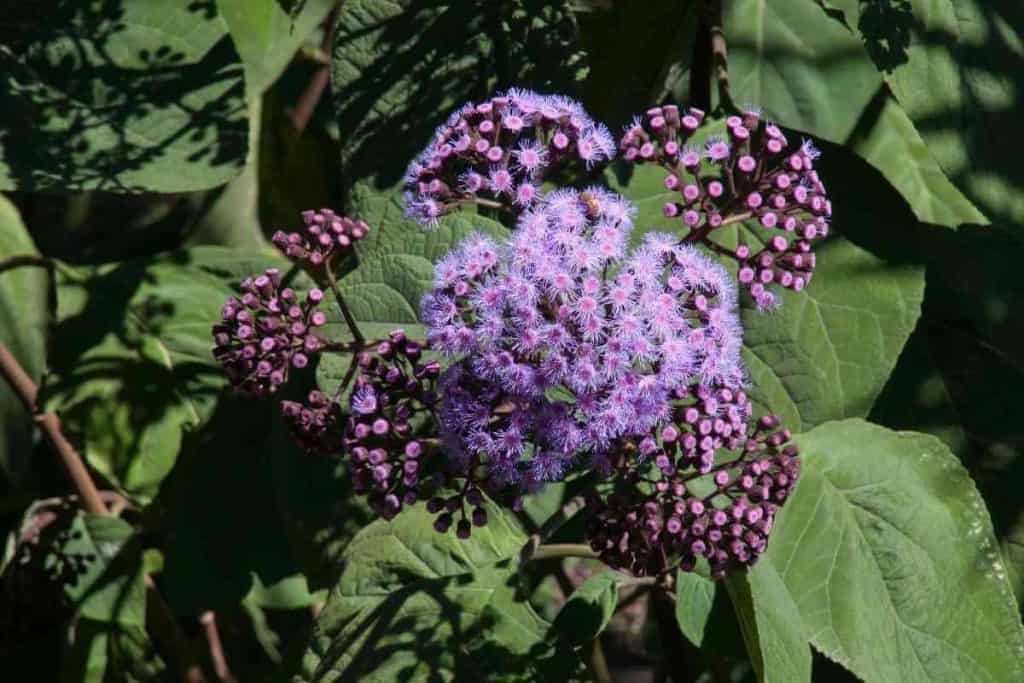
Mistflower is a perennial from the North American Diaspora. It grows attractive purple blooms that have powder puff-like flowers.
It is also a late bloomer that only grows its flowers in the late season. Mistflower is a hardy perennial that is -20 degrees. Therefore, it thrives under full sun to a partially sheltered area.
16. Wisteria
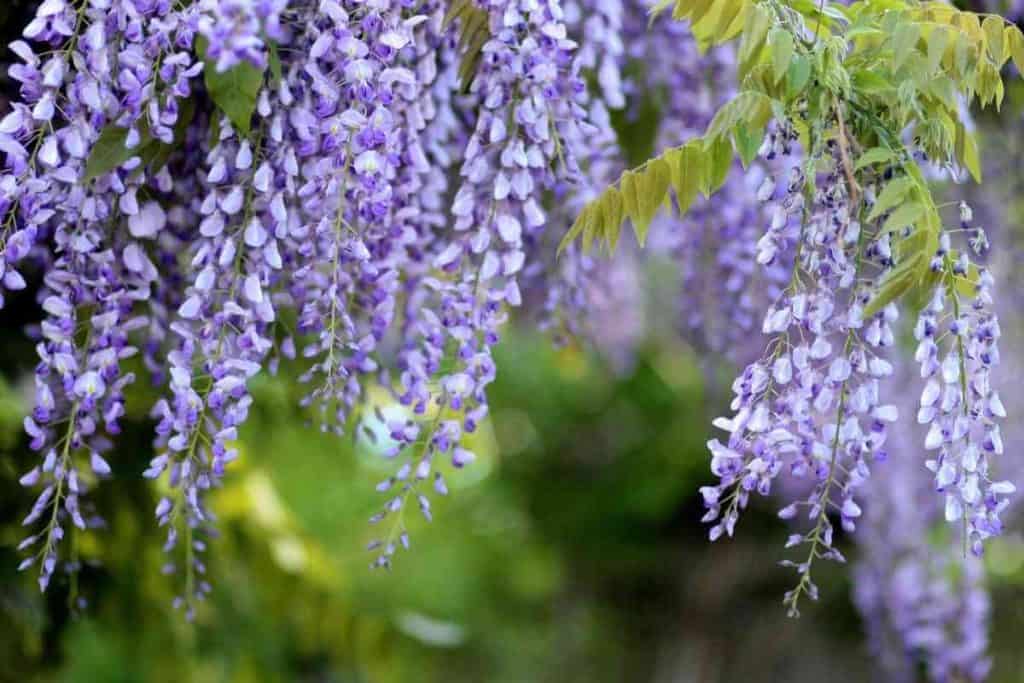
Scientifically known as Wisteria Frutescens, the wisteria is a woody climber featuring deep green foliage that can grow over 30 feet long when given the perfect growing conditions.
It produces a nice scent of purple blooms on drooping stems accompanied by narrow, smooth seed pods during the spring
The wisteria does extremely well when given sturdy trellis, post, or other support systems. If you’re going for the Chinese variety, you should note that it is not ideal in some countries.
So, in this case, we recommend you go for the American variety. The wisteria thrives under full sun and moist humus, and well-drained soil.
17. Lungwort
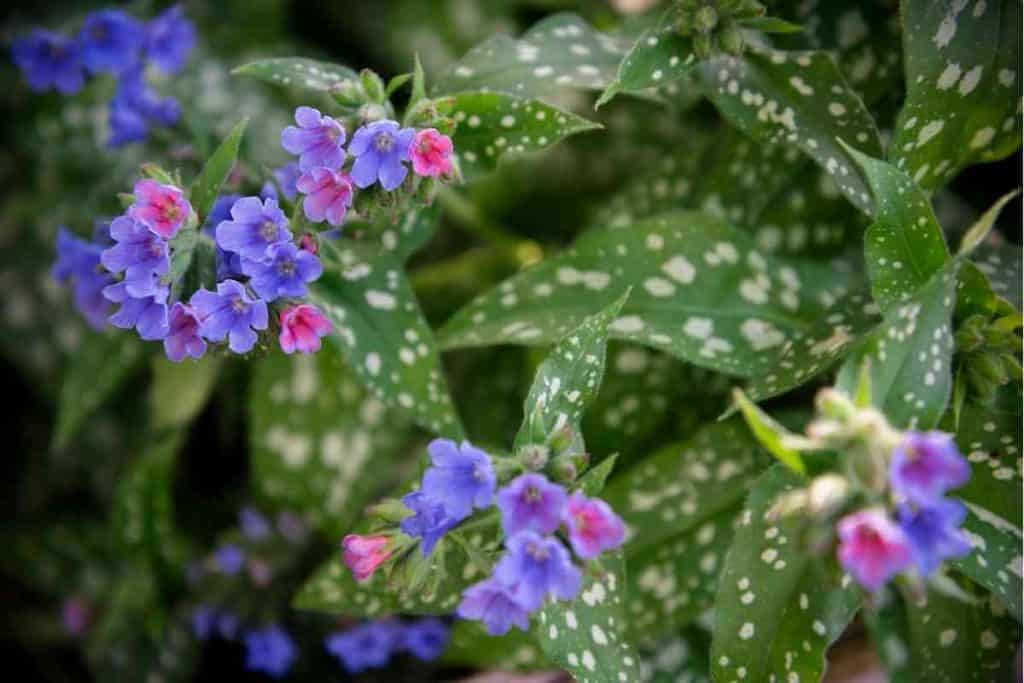
The lungwort variety produces purple perennial flowers and is an early season blooming plant. It grows attractive white and pink flowers, with some of the having mottled foliage.
It is hardy to -40 degrees Fahrenheit in its tropical jungle; therefore, you must imitate its wild conditions by keeping it in a sheltered area and prefers moderate watering and well-drained soil.
18. Iris
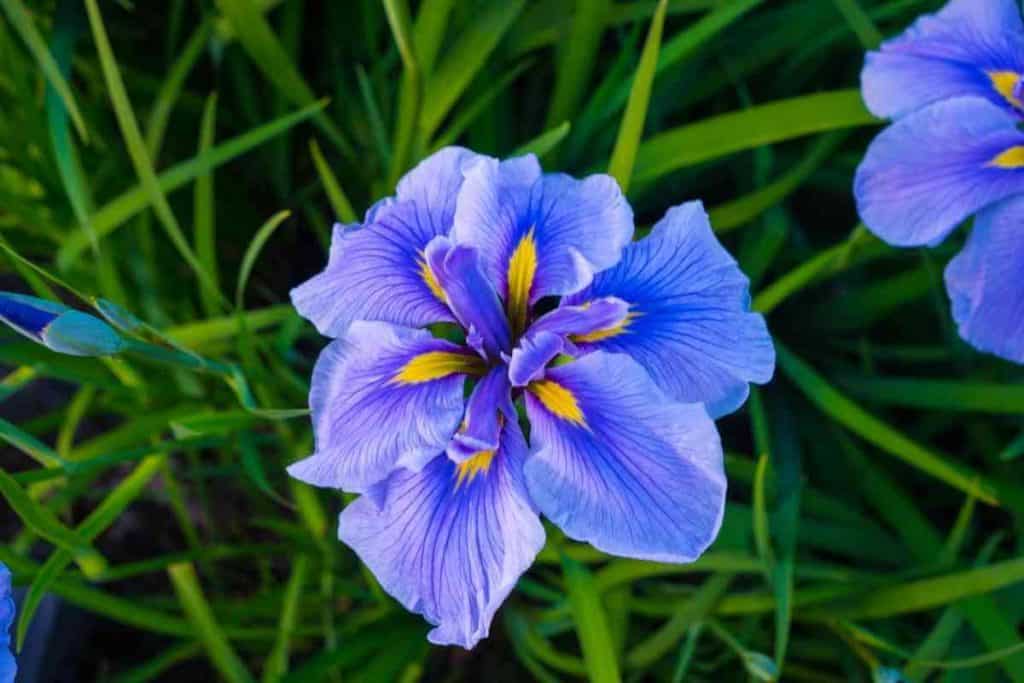
Also known as German Bearded Iris, the Iris comes with varieties of colors and shades, but the most attractive and interesting of them all is the violet shade. Don’t bury the plant’s rhizomes too deeply when planting to avoid root rot.
Apart from this, the Irish plant is very easy to grow, is hardy to -40 degrees, and can get up to 3 feet tall during each spring.
19. Coneflowers
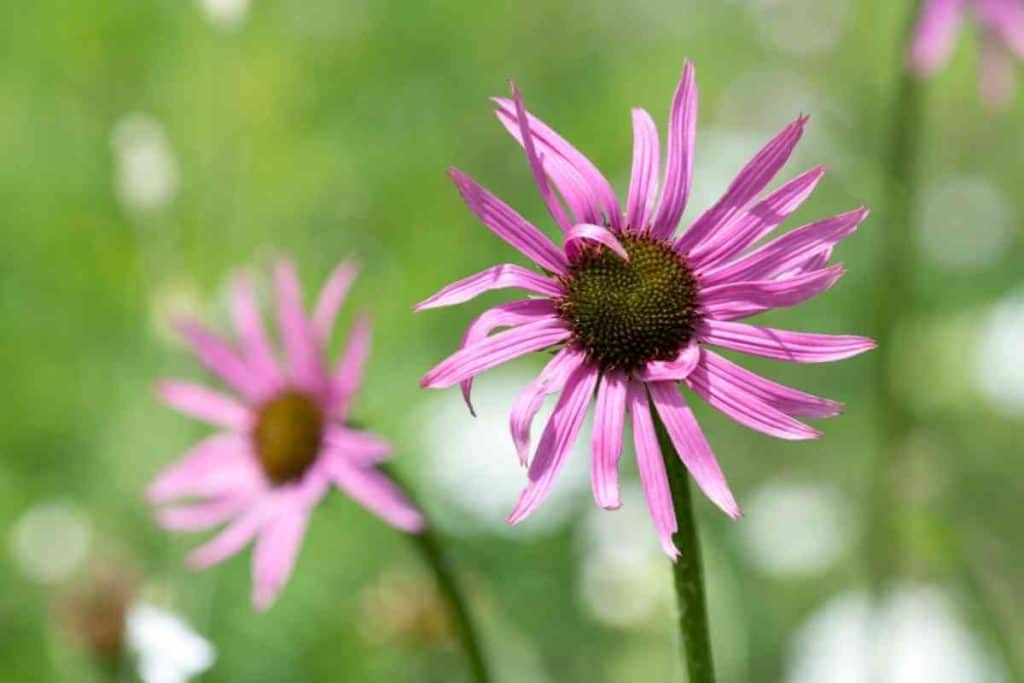
Also known as Echinacea, the coneflower is a daisy-looking flowering plant that is a little tough in nature and care. This variety can flower all through the summer and survive dry soil conditions.
It is used as a staple plant for most gardeners and is attractive to pollinators like a butterfly. It can survive in virtually all climates and comes in various colors, including purples.
20. Honeywort

Scientifically known as Cerinthe Major ‘Purpurascens’, the honeywort is an ideal hardy annual prospect to add to your ornamental border. It features gorgeous silvery blue-green leaves and gorgeously-looking purple blooms that have the shape of a bell.
Its flowers attract pollinators like bees. Its flowers are amazing and are always ready for self-seeding. Height is up to 60cm tall and wide.




